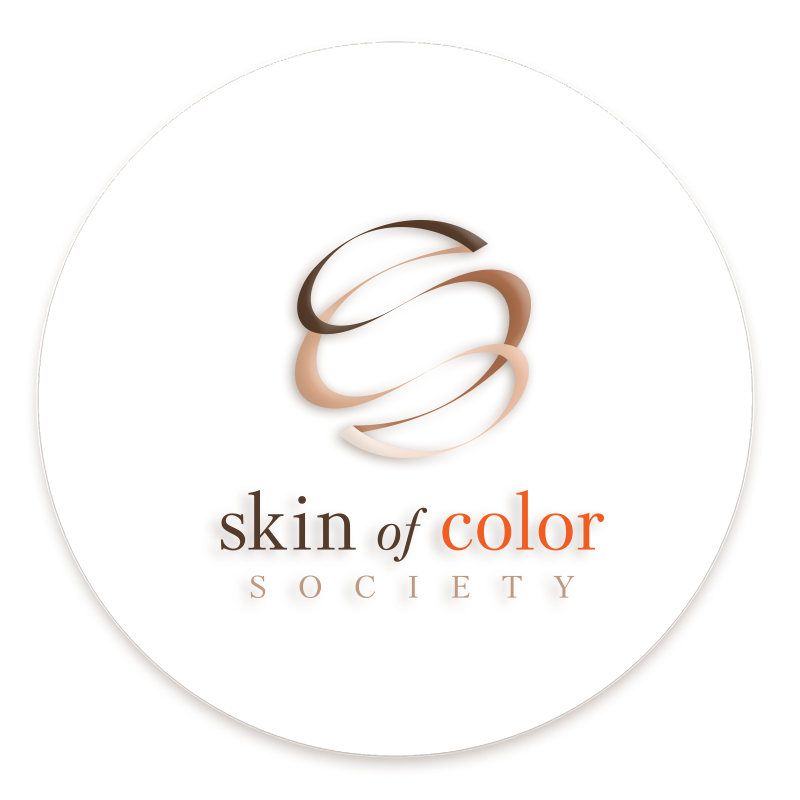Sun Protection for Skin of Color
UV Light Can Hurt Your Skin
Ultraviolet (UV) light from the sun is well known to damage the skin. People with darker skin also need to know about the potential dangers of UV light to maintain healthy skin.
What are UV rays?
The sun makes UV radiation. UVA causes tanning and the skin darkening while UVB can cause sunburns. In parts of the country where the sun is strong, avoiding the sun is difficult. Frequent sunburns can lead to skin problems like wrinkles, aging, sun spots, and even cancer. Protecting your skin from the sun all year round with sunscreen is the best way to avoid UV damage.
Why should I use sunscreen?
Using sunscreen regularly can help prevent many skin conditions. Sunscreens absorb the harmful UVA and UVB rays. The amount of protection from a sunscreen is measured by its SPF number, which means Sun Protection Factor.
Which SPF number should I choose?
The Skin of Color Society suggests using sunscreen with an SPF of at least 30. This sunscreen should protect against both UVA and UVB rays.
What does SPF 30 mean?
When a sunscreen says its SPF30 it means that the sunscreen blocks about 97% of UVB rays.
Why should people with darker skin use sunscreen?
Some people think that individuals with darker skin don't need sunscreen, but this is not true. Even though darker skin typically doesn't burn as easily, UV rays can still harm darker skin with enough sun exposure. The Skin Cancer Foundation says that skin cancer is becoming more common in Hispanics. People with darker skin can have more serious problems from skin cancer than people with lighter skin because skin cancer is often diagnosed later in people with darker skin.
What is the UV index?
The UV Index is a daily forecast made by the National Weather Service that tells how much UV radiation will reach the earth's surface each day. The table below explains the risk at each level and gives advice for sun protection. The higher the number, the more dangerous UV radiation reaches the Earth’s surface.
In other words, the higher the number, the faster you will get sunburned. A reading of 2 or less means there is a low risk of sunburn and you don't need to take extra precautions. A reading of 6-7 means there is a high risk of sunburn and you should use sunscreen with an SPF of at least 30 and wear protective clothing. Forecasts are made every day. It's a good idea to check the UV Index for your area before you plan to spend time outside.
|
UV Index |
Description |
Media Graphic Color |
Recommended Protection |
|
0-2 |
No danger to the average person |
Green |
Wear sunglasses on bright days; use sunscreen if there is snow on the ground, which reflects UV radiation, or if you have particularly fair skin. |
|
3-5 |
Little risk of harm from unprotected sun exposure |
Yellow |
Wear sunglasses and use sunscreen, cover the body with clothing and a hat, and seek shade around midday when the sun is most intense. |
|
6-7 |
High risk of harm from unprotected sun exposure |
Orange |
Wear sunglasses and use sunscreen having SPF 30 or higher, cover the body with sun protective clothing and a wide-brim hat, and reduce time in the sun from two hours before to three hours after solar noon (roughly 10:00 AM to 4:00 PM during summer in zones that observe daylight saving time). |
|
8-10 |
Very high risk of harm from unprotected sun exposure |
Red |
Wear sunscreen, a shirt, sunglasses, and a hat. Do not stay out in the sun for too long. |
|
11+ |
Extreme risk of harm from unprotected sun exposure |
Violet |
Take all precautions, including: wear sunglasses and use sunscreen, cover the body with a long-sleeve shirt and trousers, wear a very broad hat, and avoid the sun from two hours before to three hours after solar noon. |





